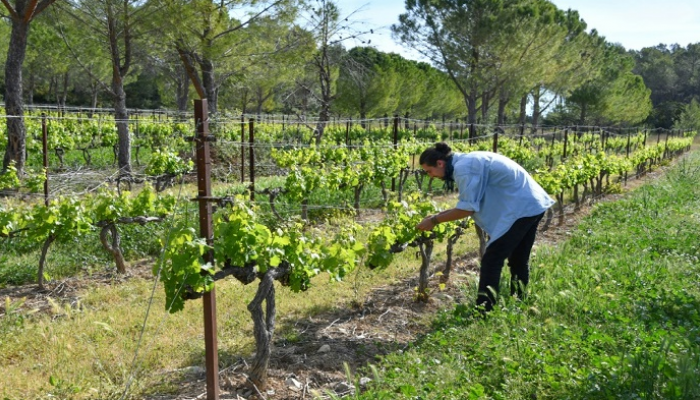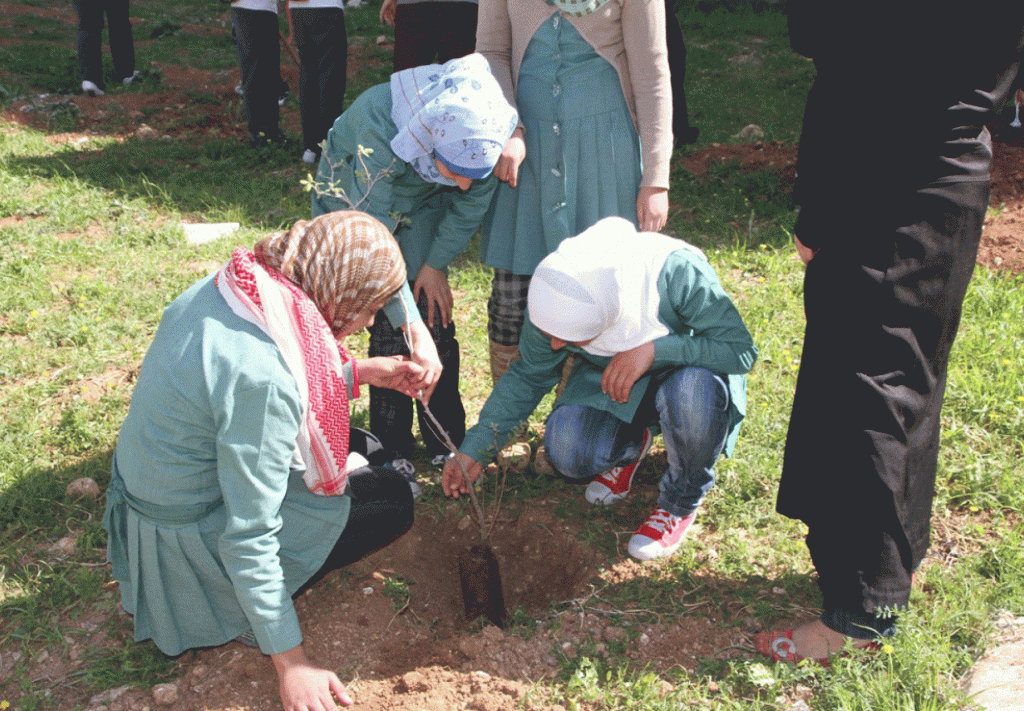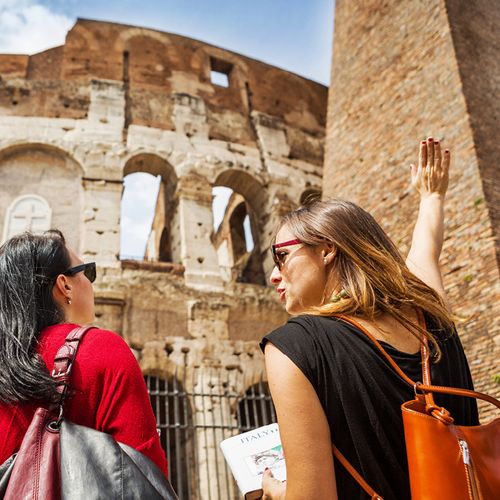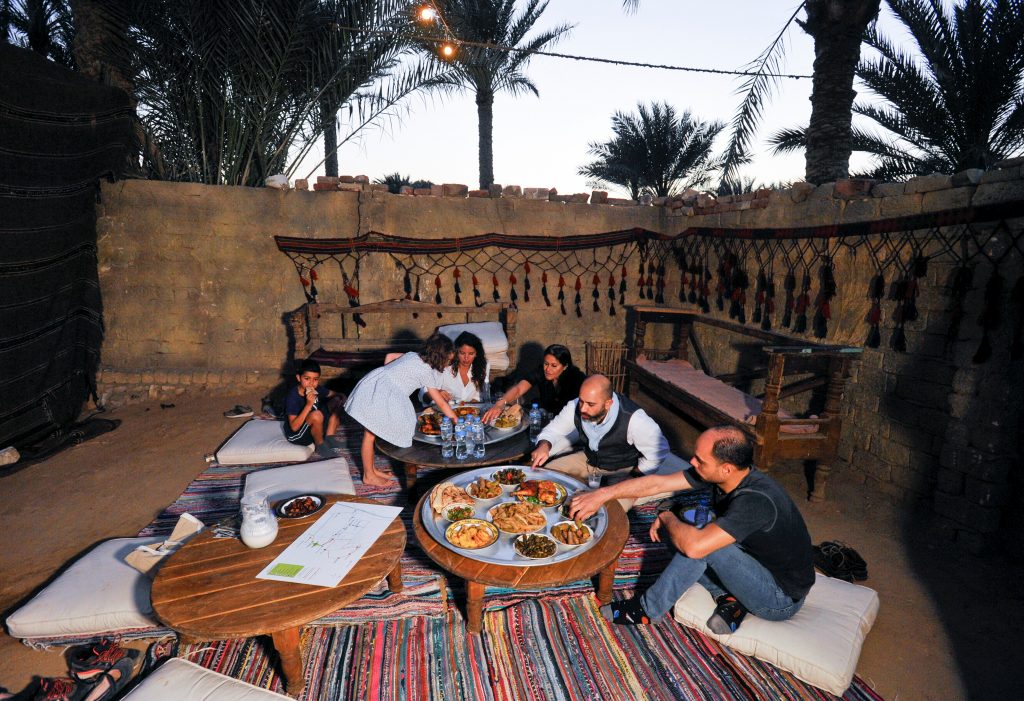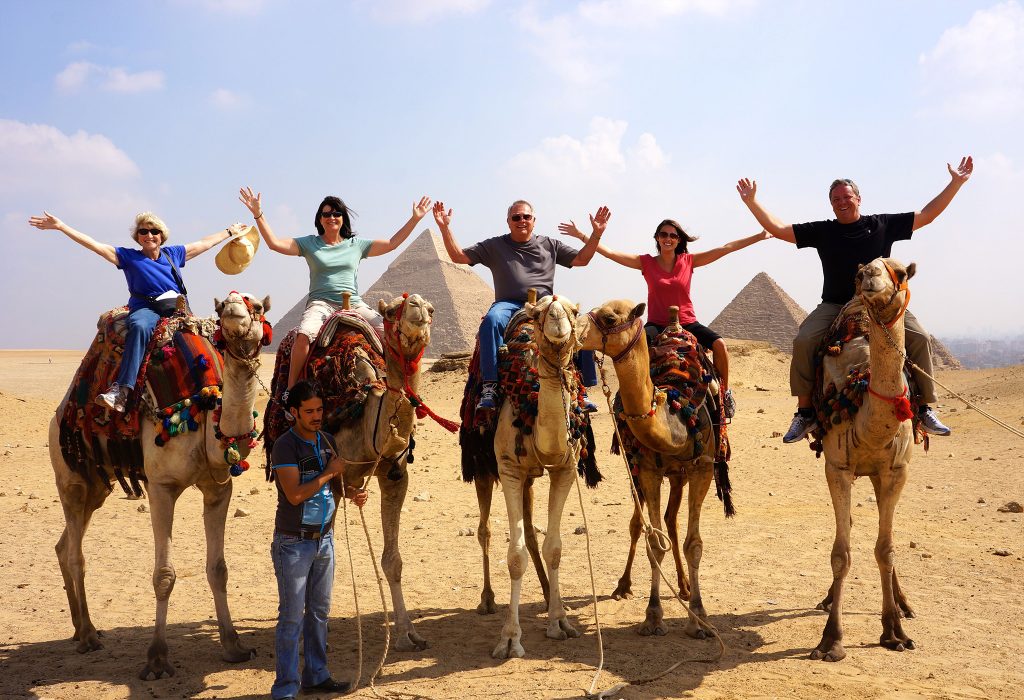Constuction, Facts & Use
Built during a time when Egypt was one of the richest and most powerful civilizations in the world, the pyramids—especially the Great Pyramids of Giza—are some of the most magnificent man-made structures in history. Their massive scale reflects the unique role that the pharaoh, or king, played in ancient Egyptian society.
Though pyramids were built from the beginning of the Old Kingdom to the close of the Ptolemaic period in the fourth century A.D., the peak of pyramid building began with the late third dynasty and continued until roughly the sixth (c. 2325 B.C.). More than 4,000 years later, the Egyptian pyramids still retain much of their majesty, providing a glimpse into the country’s rich and glorious past.

The Pharaoh in Egyptian Society
During the third and fourth dynasties of the Old Kingdom, Egypt enjoyed tremendous economic prosperity and stability. Kings held a unique position in Egyptian society. Somewhere in between human and divine, they were believed to have been chosen by the gods themselves to serve as their mediators on earth. Because of this, it was in everyone’s interest to keep the king’s majesty intact even after his death, when he was believed to become Osiris, god of the dead. The new pharaoh, in turn, became Horus, the falcon-god who served as protector of the sun god, Ra.
Did you know?
The pyramid’s smooth, angled sides symbolized the rays of the sun and were designed to help the king’s soul ascend to heaven and join the gods, particularly the sun god Ra.
Ancient Egyptians believed that when the king died, part of his spirit (known as “ka”) remained with his body. To properly care for his spirit, the corpse was mummified, and everything the king would need in the afterlife was buried with him, including gold vessels, food, furniture and other offerings. The pyramids became the focus of a cult of the dead king that was supposed to continue well after his death. Their riches would provide not only for him, but also for the relatives, officials and priests who were buried near him.
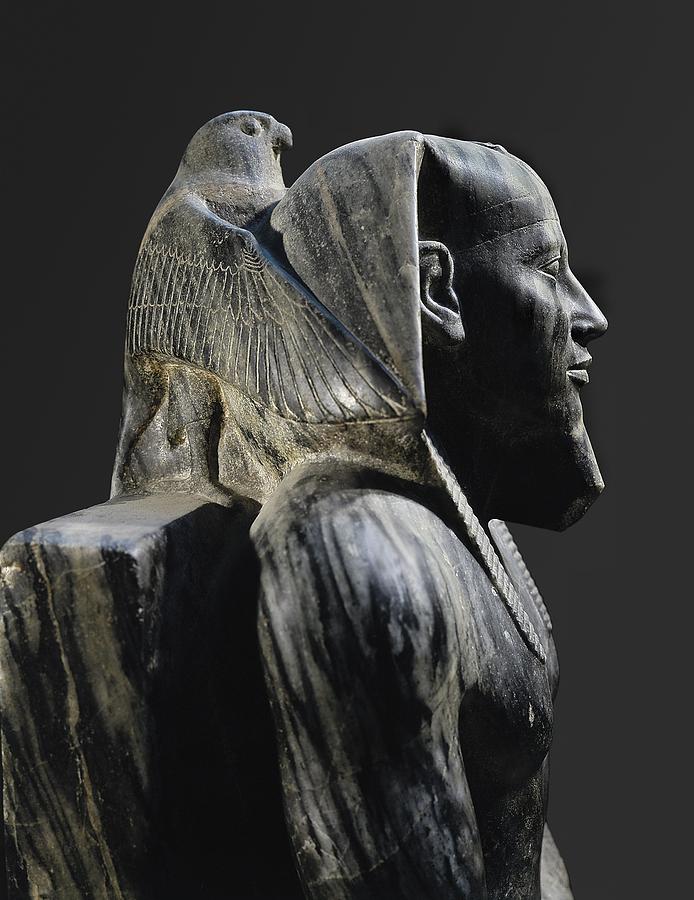
The Early Pyramids
From the beginning of the Dynastic Era (2950 B.C.), royal tombs were carved into rock and covered with flat-roofed rectangular structures known as “mastabas,” which were precursors to the pyramids. The oldest known pyramid in Egypt was built around 2630 B.C. at Saqqara, for the third dynasty’s King Djoser.
Known as the Step Pyramid, it began as a traditional mastaba but grew into something much more ambitious. As the story goes, the pyramid’s architect was Imhotep, a priest and healer who some 1,400 years later would be deified as the patron saint of scribes and physicians.
Over the course of Djoser’s nearly 20-year reign, pyramid builders assembled six stepped layers of stone (as opposed to mud-brick, like most earlier tombs) that eventually reached a height of 204 feet (62 meters); it was the tallest building of its time.
The Step Pyramid was surrounded by a complex of courtyards, temples and shrines where Djoser could enjoy his afterlife.
After Djoser
The stepped pyramid became the norm for royal burials, although none of those planned by his dynastic successors were completed (probably due to their relatively short reigns). The earliest tomb constructed as a “true” (smooth-sided, not stepped) pyramid was the Red Pyramid at Dahshur, one of three burial structures built for the first king of the fourth dynasty, Sneferu (2613-2589 B.C.) It was named for the color of the limestone blocks used to construct the pyramid’s core.
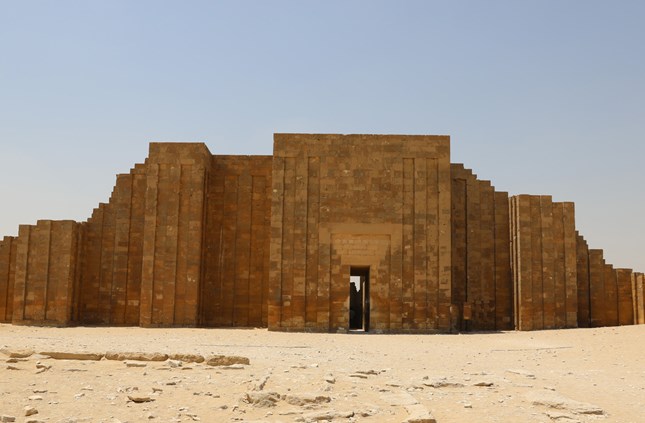
The Great Pyramids of Giza
No pyramids are more celebrated than the Great Pyramids of Giza, located on a plateau on the west bank of the Nile River, on the outskirts of modern-day Cairo. The oldest and largest of the three pyramids at Giza, known as the Great Pyramid , is the only surviving structure out of the famed Seven Wonders of The Ancient World.
It was built for Pharaoh Khufu (Cheops, in Greek), Sneferu’s successor and the second of the eight kings of the fourth dynasty.
Though Khufu reigned for 23 years (2589-2566 B.C.), relatively little is known of his reign beyond the grandeur of his pyramid. The sides of the pyramid’s base average 755.75 feet (230 meters), and its original height was 481.4 feet (147 meters), making it the largest pyramid in the world. Three small pyramids built for Khufu’s queens are lined up next to the Great Pyramid, and a tomb was found nearby containing the empty sarcophagus of his mother, Queen Hetepheres. Like other pyramids, Khufu’s is surrounded by rows of mastabas, where relatives or officials of the king were buried to accompany and support him in the afterlife.
The middle pyramid at Giza
Was built for Khufu’s son Pharaoh Khafre (2558-2532 B.C). The Pyramid of Khafre is the second tallest pyramid at Giza and contains Pharaoh Khafre’s tomb. A unique feature built inside Khafre’s pyramid complex was the Great Sphinx, a guardian statue carved in limestone with the head of a man and the body of a lion. It was the largest statue in the ancient world, measuring 240 feet long and 66 feet high. In the 18th dynasty (c. 1500 B.C.) the Great Sphinx would come to be worshiped itself, as the image of a local form of the god Horus.
The southernmost pyramid at Giza
Wasbuilt for Khafre’s son Menkaure (2532-2503 B.C.). It is the shortest of the three pyramids (218 feet) and is a precursor of the smaller pyramids that would be constructed during the fifth and sixth dynasties.
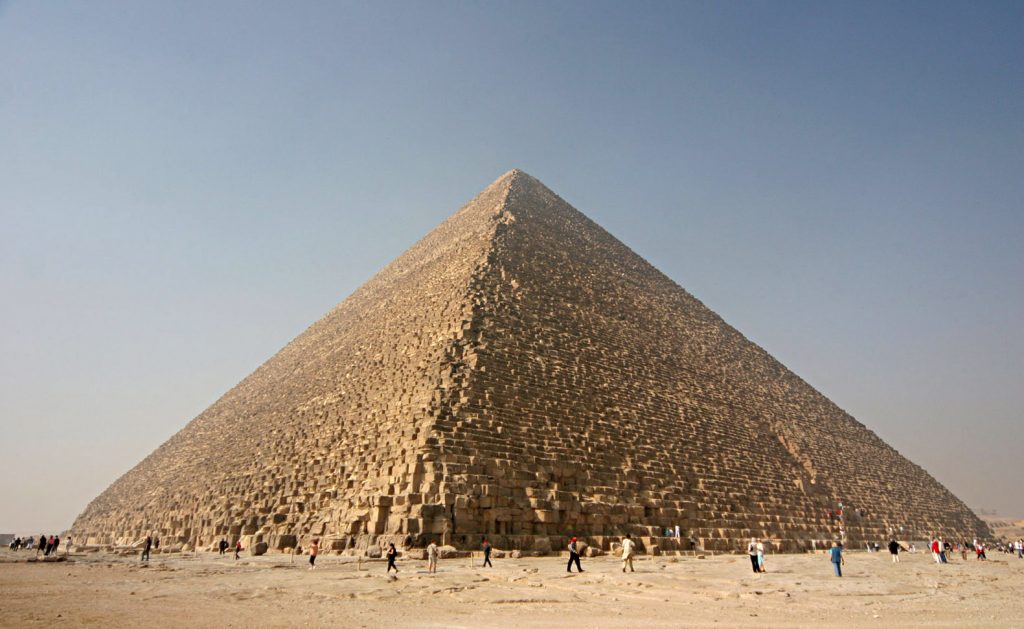
Who Built The Pyramids?
Though some popular versions of history held that the pyramids were built by slaves or foreigners forced into labor, skeletons excavated from the area show that the workers were probably native Egyptian agricultural laborers who worked on the pyramids during the time of year when the Nile River flooded much of the land nearby. Approximately 2.3 million blocks of stone (averaging about 2.5 tons each) had to be cut, transported and assembled to build Khufu’s Great Pyramid. The ancient Greek historian Herodouts wrote that it took 20 years to build and required the labor of 100,000 men, but later archaeological evidence suggests that the workforce might actually have been around 20,000.


